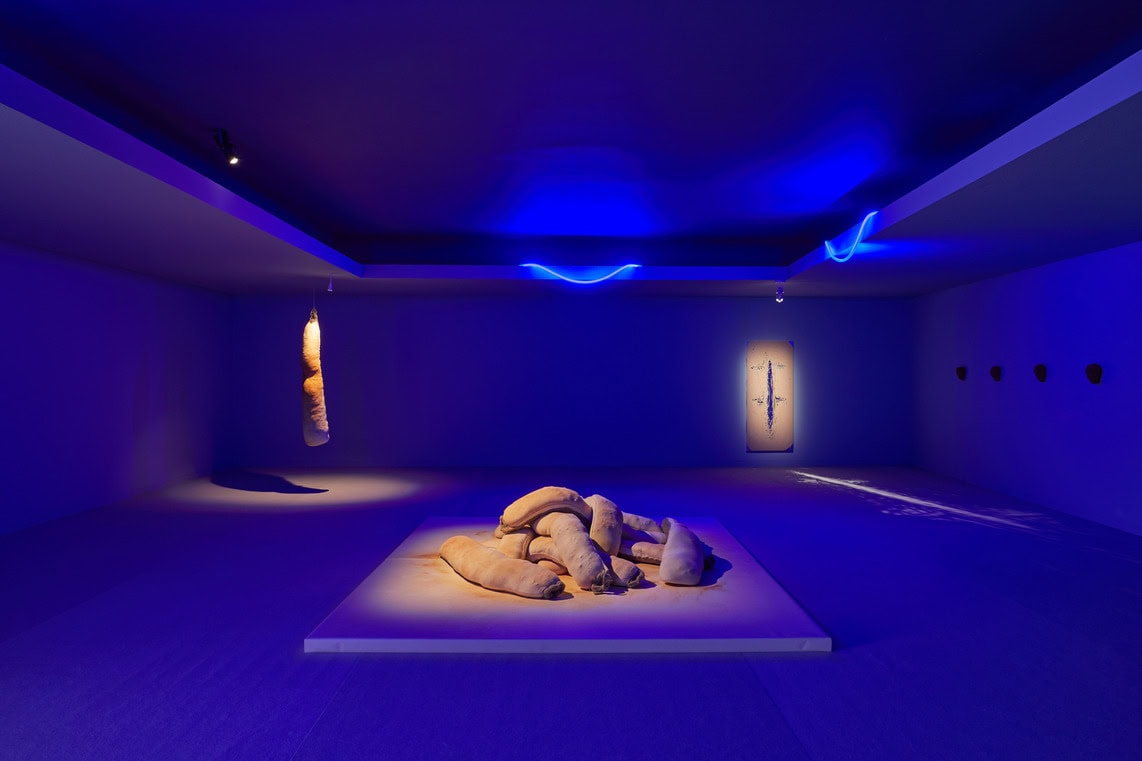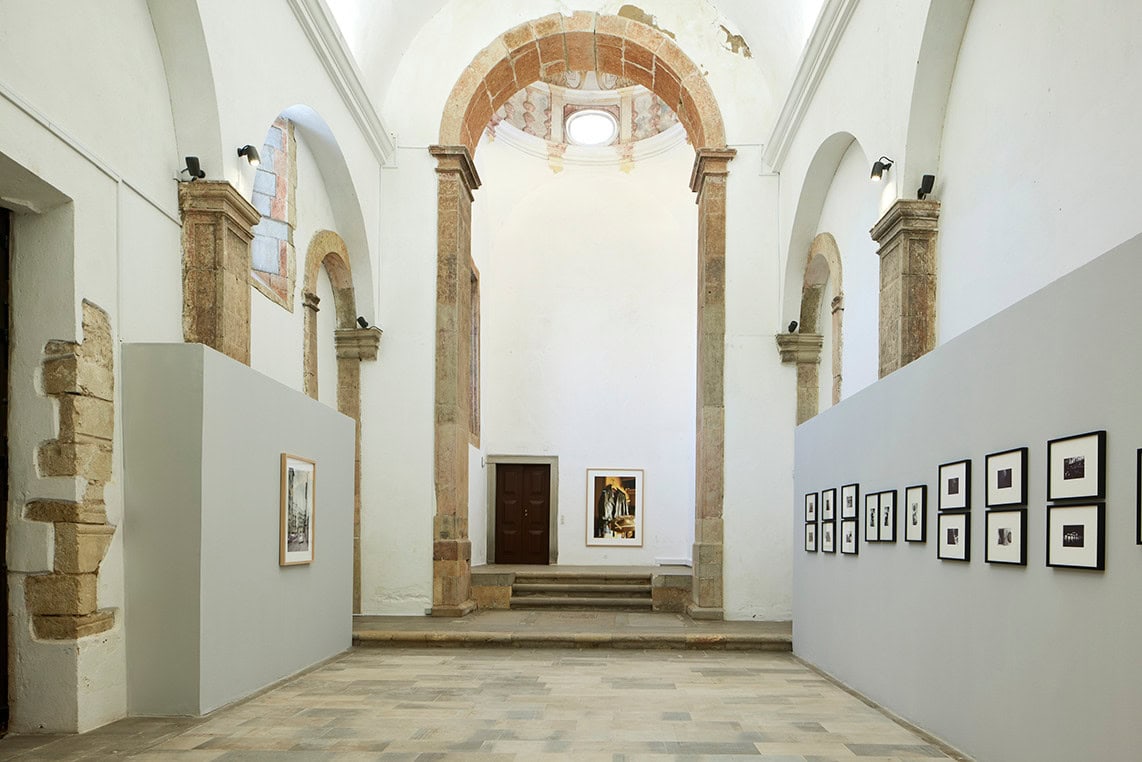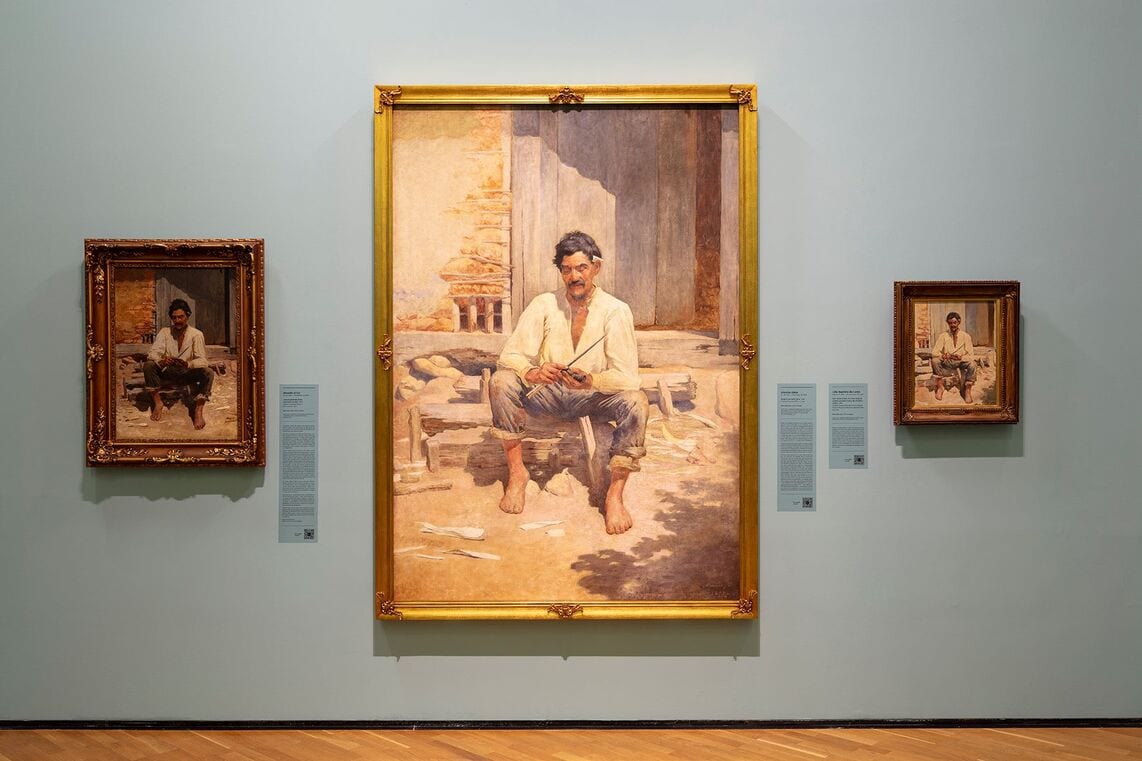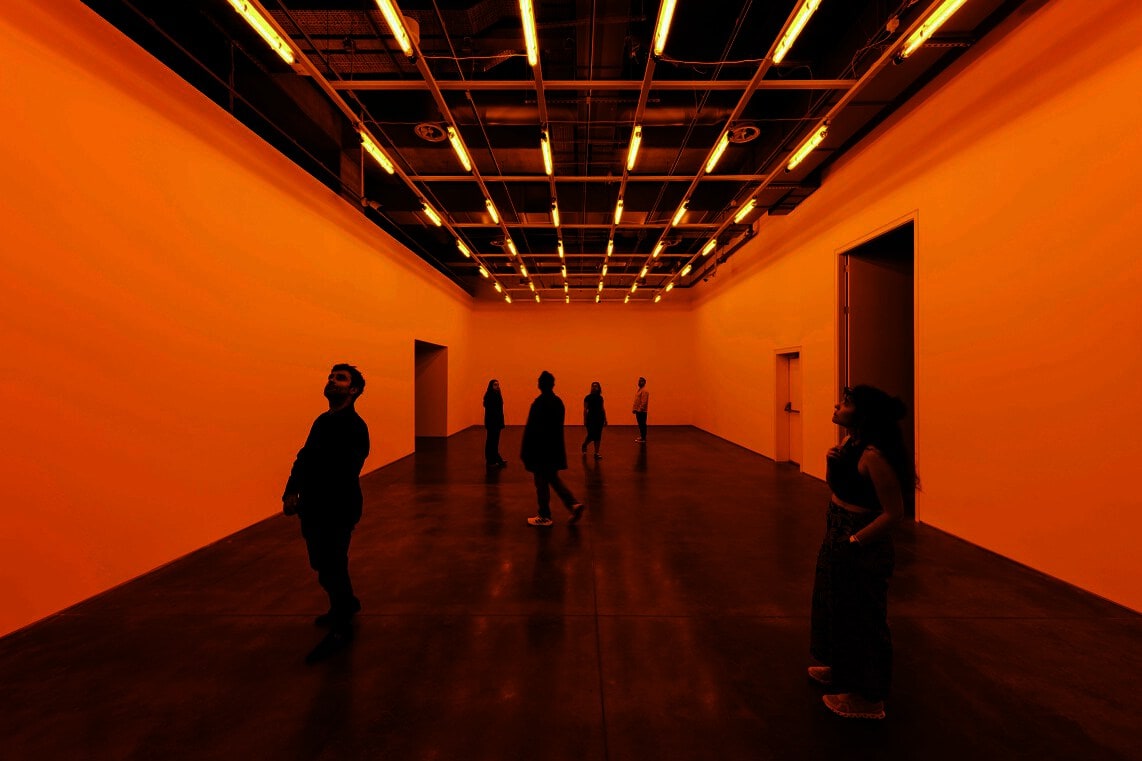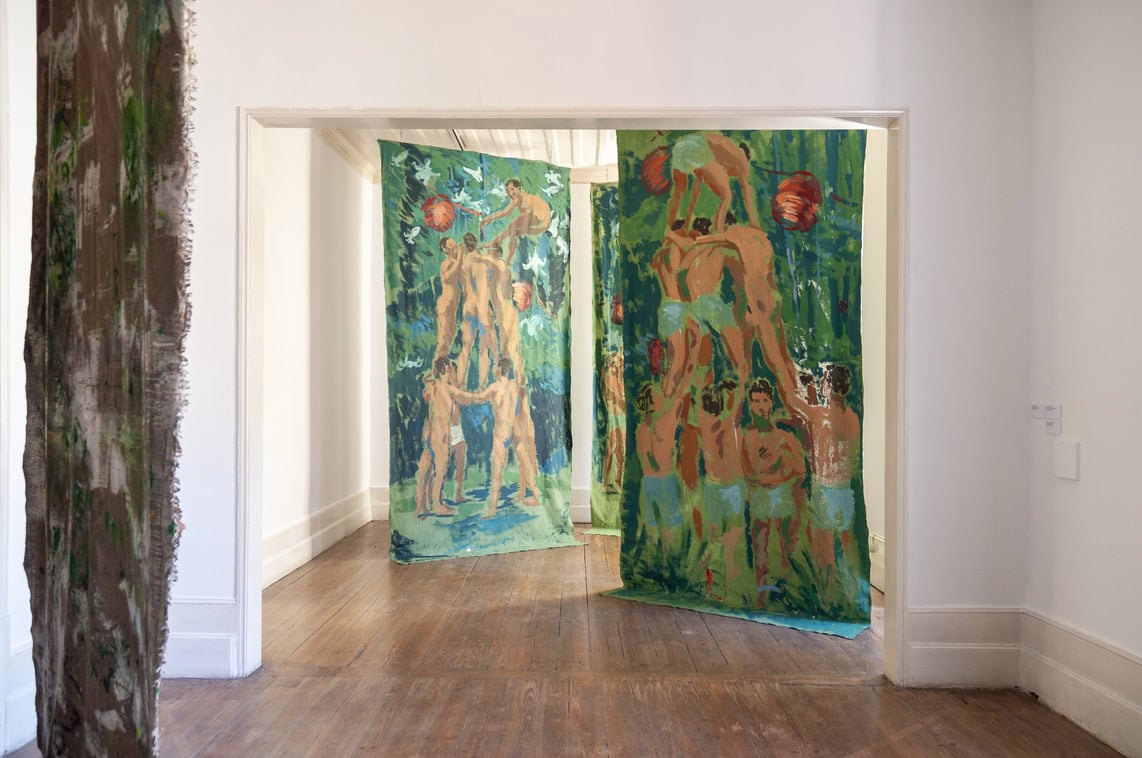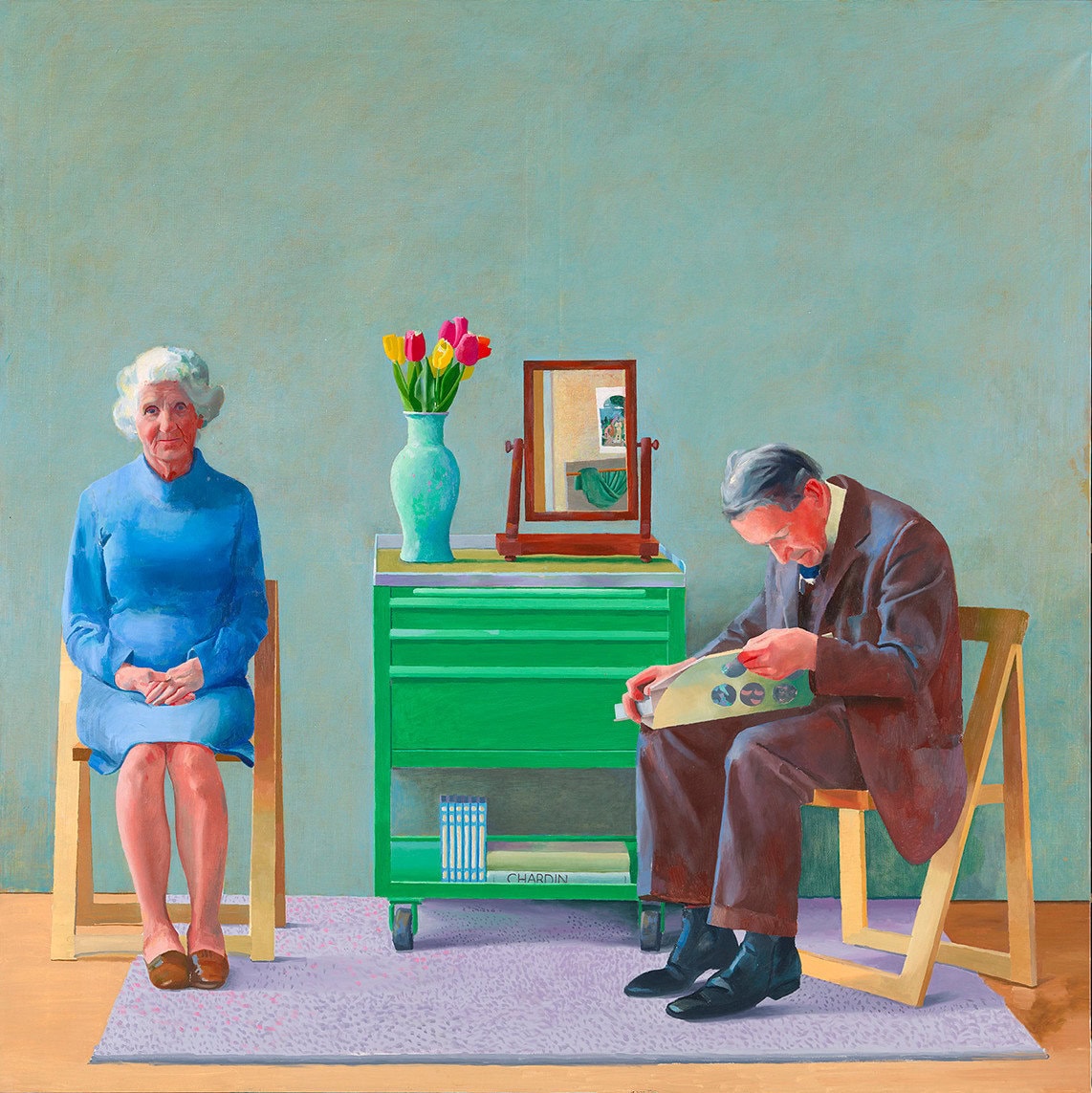London’s National Gallery opened the Hockney and Piero exhibition on August 8, in which the British museum reiterates the greatness of one of the world’s leading living artists, David Hockney (Bradford, 1937), and the force of the English figurative pictorial tradition.
The exhibition is held in a relatively small area, the museum’s ‘room 46’ – the same room where last year’s Criville’s Garden exhibition happened, in which the work of Paula Rego (Lisbon, 1935 – 2022) resonated with the Italian quattrocento painting of Carlo Crivelli (Venice, 1435 – 1495).
The proposal made by curator Susanna Avery-Quash (London, 1970) for Hockney’s exhibition is a dialogue between two paintings by the English artist, My Parents (1977) and Looking at Pictures on a Screen (1977), and Piero della Francesca’s The Baptism of Christ (1448-50) (Sansepolcro, Italy, 1415 – 1492).
In a rectangular room dyed cobalt blue, the main wall features the Italian painting – purchased by the museum in 1861 – positioned centrally between the two English paintings. On the other walls, an original, time-stamped poster from a previous David Hockney exhibition at the same National Gallery. This is the poster for the Artist’s Eyes project, on show in the summer of 1981. As well as old letters, handwritten by the artist himself, arguing with museum managers over technical issues to make the event that took place in the 80s feasible.
Hockney and Piero is an exhibition forming part of the celebrations for the National Gallery’s 200th anniversary and also an outgrowth of the Artist’s Eyes project, which between 1977 and 1990 featured ten innovative exhibitions by several artists that proposed a dialogue with the museum’s permanent collection.
‘’Every photograph has a certain amount of time.
But much less in a photograph than in a painting.
In some way, time is what makes space.”
David Hockney in an interview with critic Martin Gayford (1952)
On August 29, 2023, Hockney talked to Martin Gayford about the conceptual structuring of this exhibition and the production of material for the catalogue.
During the conversation, the artist commented on his first contact with the work of Piero della Francesca, in a book he had won as a teenager when he won an art prize at the Bradford School of Art.
He talked about the connection between the composition of The Baptism and the portrait of Henry Geldzahler and Christopher Scott (Hockney, 1969), a work that is now in a private collection, where the models Henry and Scott are posed head-on and in profile, in a similar way to the presentation of Jesus Christ and John the Baptist painted by Piero.
Throughout the meeting, the painter reflects on the printing of painting images and mentions a certain magic with the advent of the colour catalogue – in another conversation, with curator Hans Ulrich Obrist (Weinfelden, 1968), included in the book Lives of the Artists, Lives of the Architects, Hockney even remarks that ‘anyone who has a catalogue has a work at home. They are not reproductions, as they only exist in this form’.
The artist pointed out to Gayford that the majority of fifteenth-century paintings are frescoes and that the reproductions on postcards and in catalogues are glossy, significantly altering this relationship of scale and texture.
This connection between Hockney and printed reproduction is key to understanding Hockney and Piero, as there is a paradox: In Looking at Pictures on a Screen, prints of paintings from the National Gallery’s collection appear – works by Johannes Vermeer (Delft, 1632 – 1675), Vincent Van Gogh (Zudert, 1853 – 1890), Edgar Degas (Paris, 1834 – 1917) and Piero della Francesca himself – and, through these representations, besides the direct dialogue with Piero’s work, ‘doubles’ are wrought for us. These prints resurface in paint on canvas with David Hockney’s paintbrush aura.
The revival of a Renaissance piece acquires some special features in contemporary times, since fresco or temple paintings present an opacity unlike the brightness of a print on catalogue paper. This understanding of the differing brightness of the double is what makes the British painter attach so much attention to Piero’s Baptism.
A print of The Baptism of Christ had been hanging for over thirty years on the wall of Hockney’s mother’s bedroom, influencing the composition of My Parents – as can be seen in an image available in the exhibition catalogue.
Moreover, the artist’s infatuation with the quattrocento also comes from an idea of the natural ‘clarity and brilliance’ of light in Italy, a place that reminds David Hockney of California’s climate and luminosity, where the painter has lived for many years and still owns two homes.
Hockney and Piero will be at the National Gallery until October 27, 2024. The exhibition honours two great British symbols – one of the leading artists and the collection of one of the major museums -, as well as clearly showing how, in a post-World War II world, the United Kingdom did not appear to be mainly influenced by abstract expressionism and constructivism: it simply continued to paint human bodies with Francis Bacon (1909 – 1992), Lucian Freud (1922 – 2011), David Hockney and so many other artists.
Artists from the global south and from less influential countries on the world art scene would hardly find the strength to stay as relevant worldwide in recent decades by sticking to pictorial figurative art, as we live in a world where art has gone beyond the canvas. It seems that, in recent decades, in the ‘land of the Queen’, the act of sipping tea in front of a well-painted canvas with some figurative undertone has become more valued.
